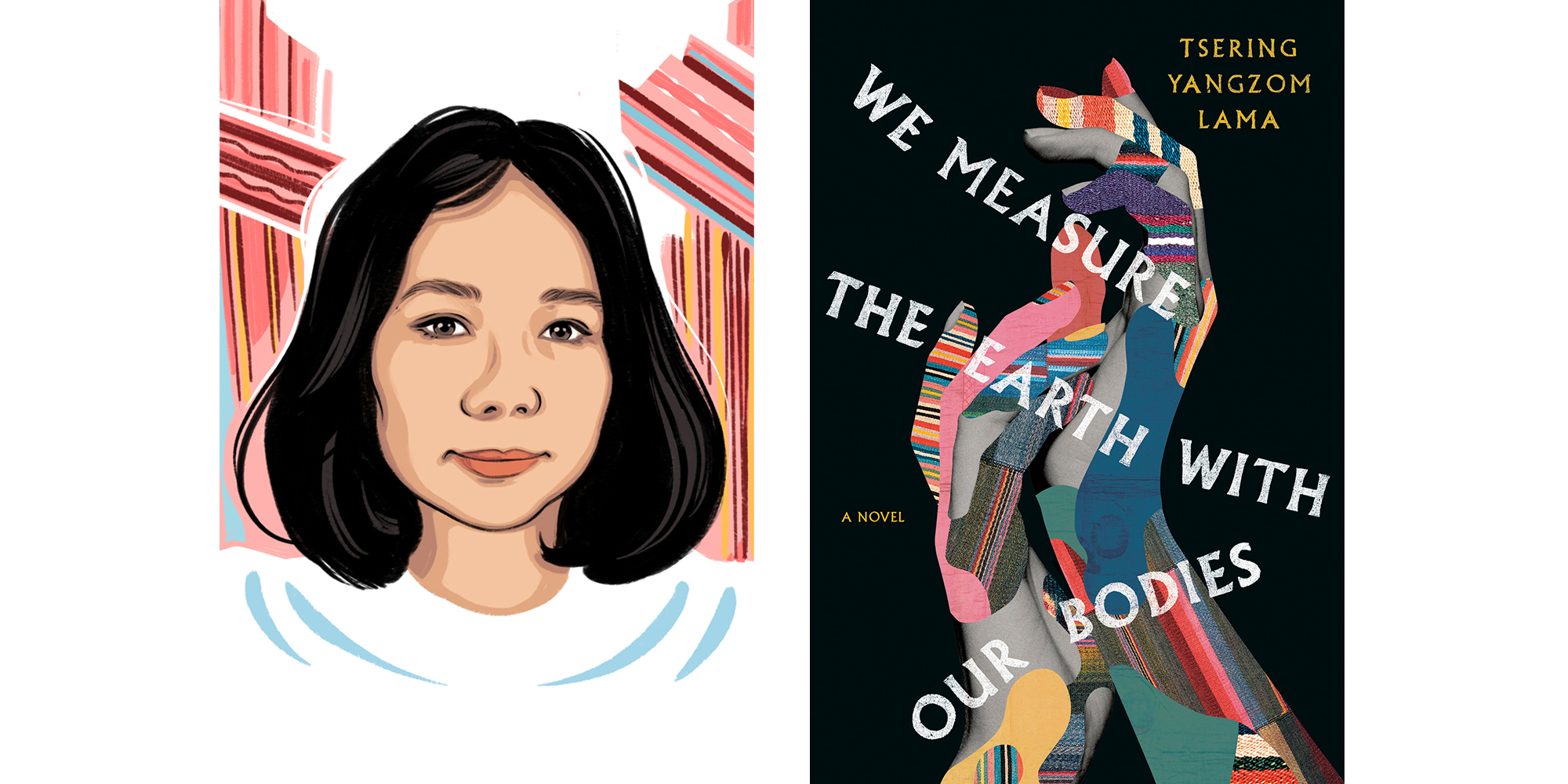A little over a decade ago, during her time in the MFA program at Columbia University, Tsering Yangzom Lama started writing a comic novel about Tibetan exiles abroad. The project focused on the expatriate community in Toronto (where Lama had previously lived), homing in on cultural mannerisms and provincial attitudes, and reflecting the Tibetan penchant for mirth.
Lama found herself drifting away from descriptions of mainstream characters and scenarios, and decided that visiting the border between Nepal and Tibet would be necessary research for her work. For a number of years after she made that risky trek, her manuscript kept its humorous sensibility. Additional research, however, shifted her perspective, and ultimately Lama decided to write a more serious story, one that delved into the pain of displacement.
The result is her debut novel, We Measure the Earth with Our Bodies (out this month from McClelland & Stewart), which spans half a century and traces the trajectory of family members who leave Tibet due to the Chinese occupation and colonization and seek new lives away from their ancestral land.
Lama, who was born in Nepal to Tibetan refugees and arrived in Vancouver at age 11, was interested in examining the toll of history on ordinary individuals. “I especially wanted to write about Tibetan women, because I feel like the narratives that have come out about my community have primarily been about the headlines coming from our leaders,” she says from her home in Vancouver. “And that is a single narrative – a really important national narrative of our struggle – but that doesn’t tell the whole story of who we are, and doesn’t express our full humanity.”
Opening in 1960 at the border between Western Tibet and Nepal, the novel follows four narrators: two young sisters – Lhamo and Tenkyi – and, later, Lhamo’s daughter, Dolma, and first love, Samphel. After losing their father and mother, a revered oracle, on the journey across the Himalayas, Lhamo and Tenkyi rely on each other as they find their bearings in Nepal. With the passage of the years, Lhamo becomes a peddler who contends with an alcoholic husband and treasures the memory of her romance with the industrious Samphel. The precocious Tenkyi, meanwhile, excels at learning and dreams of the opportunities afforded by higher education, even as it draws her further away from her sister.
Changes over generations in Lama’s own family (her grandparents were nomadic, and Lama is an Ivy League graduate) were creatively inspiring. These similarities aside, this is a work of fiction. “I don’t know that I have an oracle in my family,” Lama says, laughing, “but I don’t believe I do.”
While many Tibetans hope to find more promising futures in developed nations, the novel reveals the harsher realities. The sections set in Toronto, where Tenkyi settles and is employed as a maid, and where Dolma pursues her studies, are threaded with disillusionment. The journeys faced by exiled and immigrant populations, Lama insists, are “a mixed bag of love, and also hardship and connection that is not always easy to express or reach.”
The legacies of displacement and intergenerational trauma are emphasized by the plot centring Lhamo’s daughter, Dolma. This coming-of-age tale within the larger narrative lends greater perspective on alienation and agency, and is refreshing in its refusal of tropes about discovering identity, especially in unfamiliar worlds.
At a party in the Rosedale mansion of an arts patron, Dolma is shown a ku, a holy figurine that was originally brought by Samphel’s uncle to Lhamo’s camp in Nepal, and she is spurred to action. “The world has forgotten us. To the vast majority, we do not matter,” Dolma observes. “How else could they pass around our gods as possessions, display them in the sterile confines of museums and private collections, as though we were already long gone?”
By introducing the artifact – based on an actual relic the author saw at the Rubin Museum of Art in New York – Lama dramatizes what she considers the disconnect between the treatment of Tibetan culture and the treatment of Tibetan people. Whereas religious objects are admired, “as a whole, Tibetan people are living in a lot of hardship. Many people don’t have papers and are refugees and are stateless.”
Lama is an emotionally nuanced writer. In the novel, ire and elucidation are finely balanced, underscoring ideas of unity and sacrifice. Mythological motifs are woven into the narrative. We Measure the Earth with Our Bodies serves as a witness to the struggles of Tibetan exiles, and details unspoken interior lives shaped by geopolitical strife.
Writing this novel came from the wish to understand the complex consequences of colonization. “It has all kinds of effects in terms of interpersonal relations, spiritual violence and displacement, memory, and how we love each other,” Lama says. “To get a really clear picture of this community as I see it requires me to look at all aspects of it, including the pain.”
Illustration: Rachel Idzerda

 Contact us via email
Contact us via email

